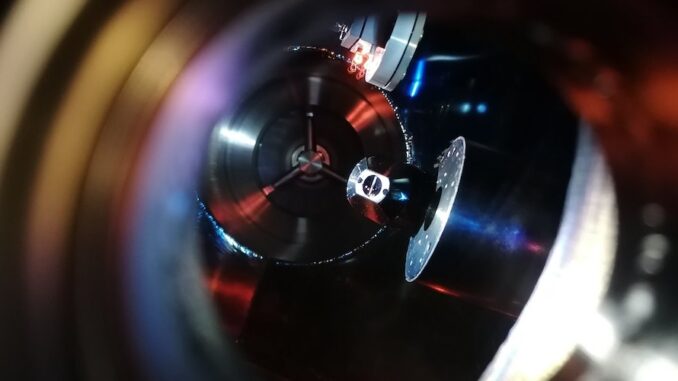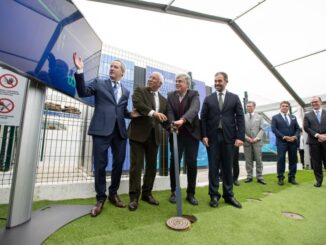
A Swiss-Polish team of experimental and theoretical physicists has found the answer to the question of why previous attempts to use magnesium hydride for storing hydrogen have proved unsatisfactory, and why they may succeed in the future.
In still-rare hydrogen-powered cars, the fuel is stored compressed at a pressure of around 700 atmospheres. This is neither the cheapest nor the safest method, and it has little to do with efficiency: There are only 45 kilograms of hydrogen in one cubic meter. The same volume can hold 70 kilograms of hydrogen if it is condensed beforehand.
The liquefaction process requires large amounts of energy, and the extremely low temperature, at around 20 Kelvin, must then be maintained throughout storage. An alternative could be suitable materials; for example, magnesium hydride, which can hold up to 106 kilograms of hydrogen in a cubic meter.
Magnesium hydride is among the simplest of the materials tested for hydrogen storage capacity. Its content can reach 7.6% (by weight). Magnesium hydride devices are therefore quite heavy and so mainly suitable for stationary applications. However, it is important to note that magnesium hydride is a very safe substance and can be stored without risk; for example, in a basement, and magnesium itself is a readily available and cheap metal.
“Research on the incorporation of hydrogen into magnesium has been going on for decades, yet it has not resulted in solutions that can count on wider use,” said Zbigniew Lodziana, a theoretical physicist who has co-authored an article in Advanced Science, where the latest discovery is presented.
“One source of problems is hydrogen itself. This element can effectively penetrate the crystal structure of magnesium, but only when it is present in the form of single atoms. To obtain it from typical molecular hydrogen, a catalyst efficient enough to make the process of hydrogen migration in the material fast and energetically viable is required,” Lodziana said. “So everyone has been looking for a catalyst that meets the above conditions, unfortunately without much success. Today, we finally know why these attempts were doomed to failure.”
Lodziana has developed a new model of the thermodynamic and electron processes occurring in magnesium in contact with hydrogen atoms. The model predicts that during the migration of hydrogen atoms, local, thermodynamically stable magnesium hydride clusters are formed in the material. At the boundaries between the metallic magnesium and its hydride, changes in the electronic structure of the material then occur, and these changes have a significant role in reducing the mobility of hydrogen ions.
In other words, the kinetics of magnesium hydride formation is primarily determined by phenomena at its interface with magnesium. This effect has so far not been taken into account in the search for efficient catalysts.
For this study, the migration of atomic hydrogen in a layer of pure magnesium sputtered onto palladium was studied in an ultra-high vacuum chamber. The measuring machine was capable of recording changes in the state of several outer atomic layers of the sample under study, caused by the formation of a new chemical compound and the associated transformations of the material’s electronic structure. The model proposed by the researchers allows to fully understand the experimental results.
Such results pave the way for a new search for an optimal catalyst for magnesium hydride and explain why some of the previously found catalysts showed higher efficiency than expected.
“There is much to suggest that the lack of significant progress in hydrogen storage in magnesium and its compounds was simply due to our incomplete understanding of the processes involved in hydrogen transport in these materials,” Lodziana said. “For decades, we have all been looking for better catalysts, only not where we should be looking. Now, new theoretical and experimental results make it possible to think again with optimism about further improvements in methods of introducing hydrogen into magnesium.”



